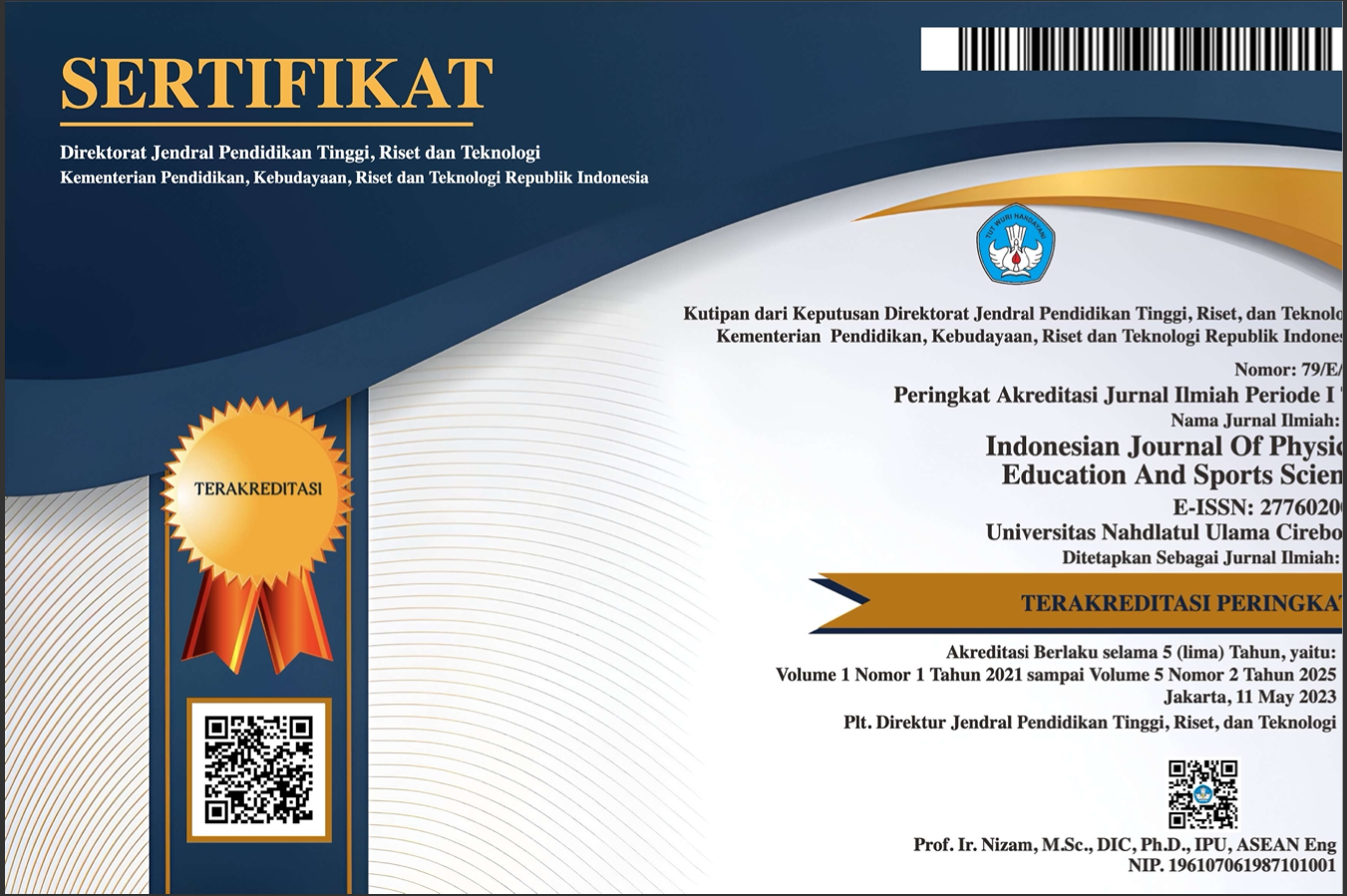Development of Virtual Hologram Audio Visualizer Box Technology to Improve Physical Fitness
DOI:
https://doi.org/10.52188/ijpess.v4i4.839Keywords:
Physical Fitness, Technology, Learning MediaAbstract
Study purpose. Develop virtual hologram box technology in improving the physical fitness of junior high school students
Materials and methods. Study adopted the research and development of Borg and Gall which is divided into planning, development and implementation stages. Subjects of this study consisted of junior high school students in grade VII with a sample size of 24 students, small-scale trials were taken with 8 students and for large-scale trials were taken with 16 students, in sampling the researcher used proportional random sampling. Instrument used in this study was a product trial questionnaire, using a Likert scale which was then assessed by experts and observers of the virtual hologram box technology media
Results. Validation results showed an average value of 84% with a very good category, the results of small-scale group trials showed an average gain from experts and observers of 77.5% with a good category and the results of large-scale group trials showed an average gain percentage from experts and observers of 81% with a very good category and the product can be used without experiencing any problems.
Conclusions. Findings of this trial emphasize that the integration of interactive technology such as virtual hologram box can be a solution to enrich conventional and limited physical fitness teaching methods. The use of this technology allows students to be more actively involved in the learning process, and helps teachers in delivering materials in a more interesting and innovative way. For future research, the development of hologram technology should be able to visualize 3D animation, and can be tested at a higher level.
Published
How to Cite
Issue
Section
Copyright (c) 2024 Arief Darmawan , Tatok Sugiarto, Surya Adi Saputra, Ahadi Priyohutomo; Amirina Surya Mahardikarani

This work is licensed under a Creative Commons Attribution-NonCommercial-ShareAlike 4.0 International License.











